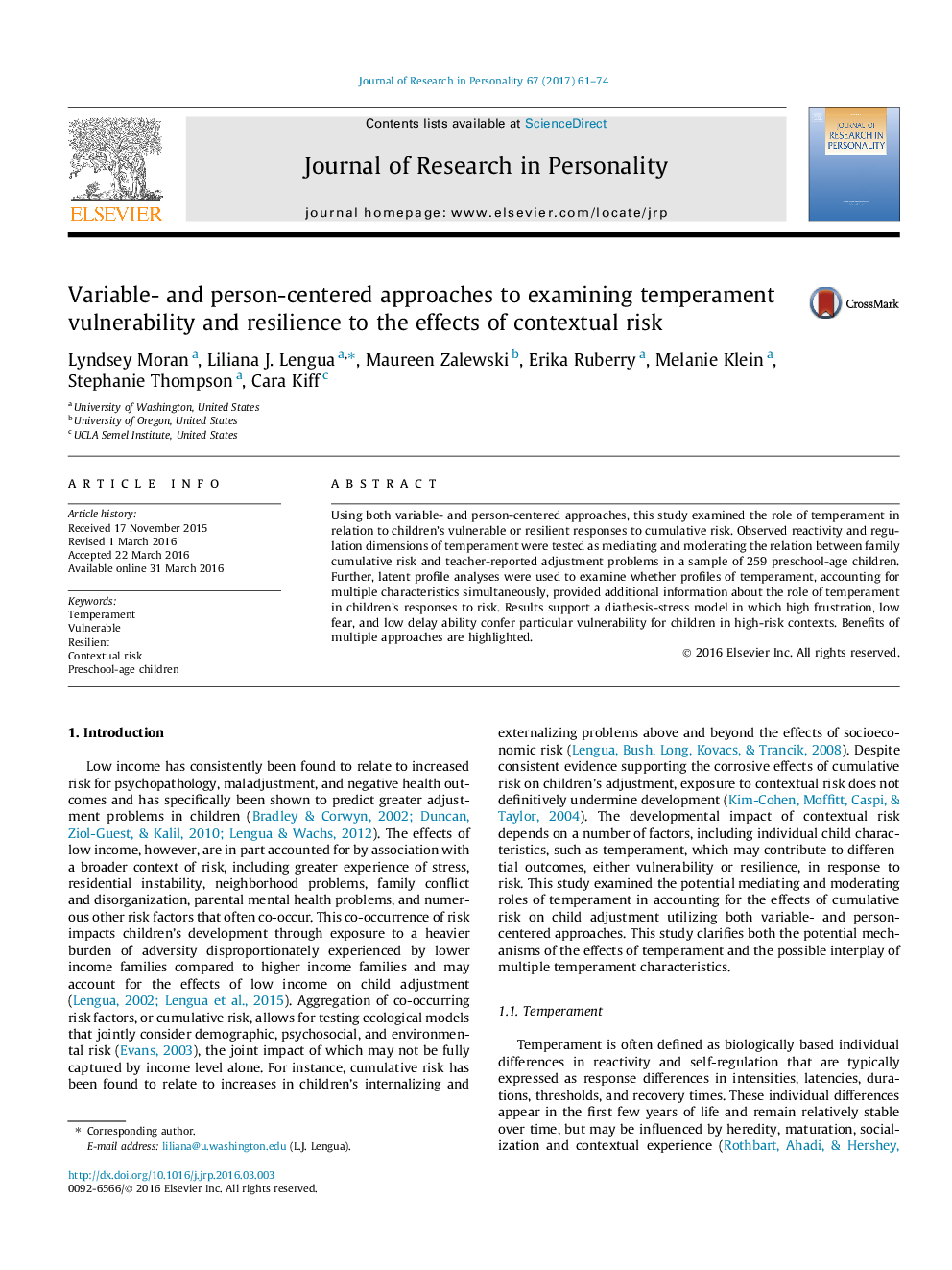| Article ID | Journal | Published Year | Pages | File Type |
|---|---|---|---|---|
| 5046206 | Journal of Research in Personality | 2017 | 14 Pages |
â¢Temperament appears to moderate, as opposed to mediate, effects of risk on adjustment outcomes in preschool-age children.â¢A person-centered approach points to the potential simultaneous impact of multiple temperament dimensions.â¢High frustration, low fear and low delay ability contribute to vulnerability to risk exposure.â¢Evidence supports diathesis-stress and vulnerability models.
Using both variable- and person-centered approaches, this study examined the role of temperament in relation to children's vulnerable or resilient responses to cumulative risk. Observed reactivity and regulation dimensions of temperament were tested as mediating and moderating the relation between family cumulative risk and teacher-reported adjustment problems in a sample of 259 preschool-age children. Further, latent profile analyses were used to examine whether profiles of temperament, accounting for multiple characteristics simultaneously, provided additional information about the role of temperament in children's responses to risk. Results support a diathesis-stress model in which high frustration, low fear, and low delay ability confer particular vulnerability for children in high-risk contexts. Benefits of multiple approaches are highlighted.
